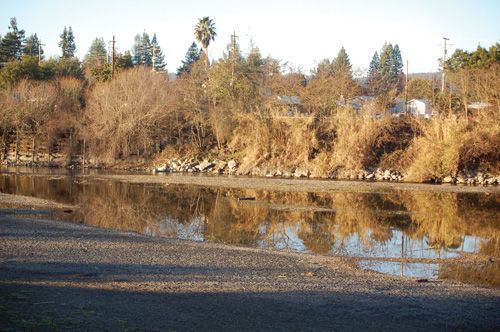
Despite the recent rain systems that have passed through, Sonoma County is still experiencing a severe drought and with a high-pressure stream and higher temps expected for early next week, there isn’t much rain in sight for the coming weeks.
“Sonoma County is in the midst of severe drought, the middle of five drought categories,” said Tom Cushman, a meteorologist with Western Weather Group.
According to the United States Drought Monitor — a team of scientists from the National Drought Mitigation Center at the University of Nebraska-Lincoln, the National Oceanic and Atmospheric and the U.S. Department of Agriculture that releases an updated drought map every Thursday — there are several potential impacts of experiencing a severe drought.
Potential impacts include:
● Inadequate grazing land
● Producers increase water efficiency methods and drought resistant crops
● Fire season is longer with high burn intensity, dry fuels and large fire spatial extent; more fire crews are on staff
● Wine country tourism increases; lake and river-based tourism declines
● Trees are stressed; plants increase reproductive mechanisms; wildlife disease increase
● Water temperature increases; programs to divert water to protect fish begin
● River flow decreases; reservoir levels are low and banks are exposed
While Sonoma County has certainly seen its fair share of long fire seasons with intense, titanic-sized wildfires, Cushman said the consequences of this dry winter probably won’t be felt by farmers and growers until later in the growing season when water shortages for irrigation and enhanced wildfire danger interfere with crop growth and harvest.
“Dry weather this time of year is a benefit to growers undertaking normal cultural practices such as pruning and other field or orchard dormant season activities because you don’t have to deal with muddy and or flooded fields,” Cushman said.
When asked what the rain totals are for this rainy season, Cushman explained that July 1 to June 30 is the time frame in looking at totals for year-to-date precipitation since a typical calendar year would contain parts of two different wet seasons.
“Currently, precipitation across Sonoma County ranges between 5-7 inches in the Healdsburg area, 6-8 inches in the hills west of Forestville and Graton. 4-5 inches for locations Petaluma south to the Bay and 3- 5 inches across the Sonoma Valley. This is approximately 33% of normal,” Cushman said.
He said the percent of normal is likely a little higher across the northwest portion of the county and probably a little lower in the southeastern portion of the county.
Around mid-January of last year the county was running at about 80% of normal rainfall according to Cushman. Rainier spots in the county received around 20 inches of rainfall, while drier spots were in the 8-10-inch range.
“The county ended the 2019-20 precipitation year a little over 50% of normal,” Cushman said.
He added that the rain total at the Charles M. Schulz Sonoma County Airport currently has a deficit of 11 inches, a number he says would be hard to make up by the end of this June.
“I know the Bay Area was very dry in the 1975-1977 period with severe drought restrictions on water usage in place. We’ve got a way to go to get conditions that severe,” he noted.
In terms of when the rain will return Cushman said, “Long-range models are hinting for precipitation returning late this month or early next month.”
You can view the most recent Western Weather Sonoma County forecast by checking out the PDF here: http://forecasts.westernwx.com/sonoma/sonomafcst.pdf







